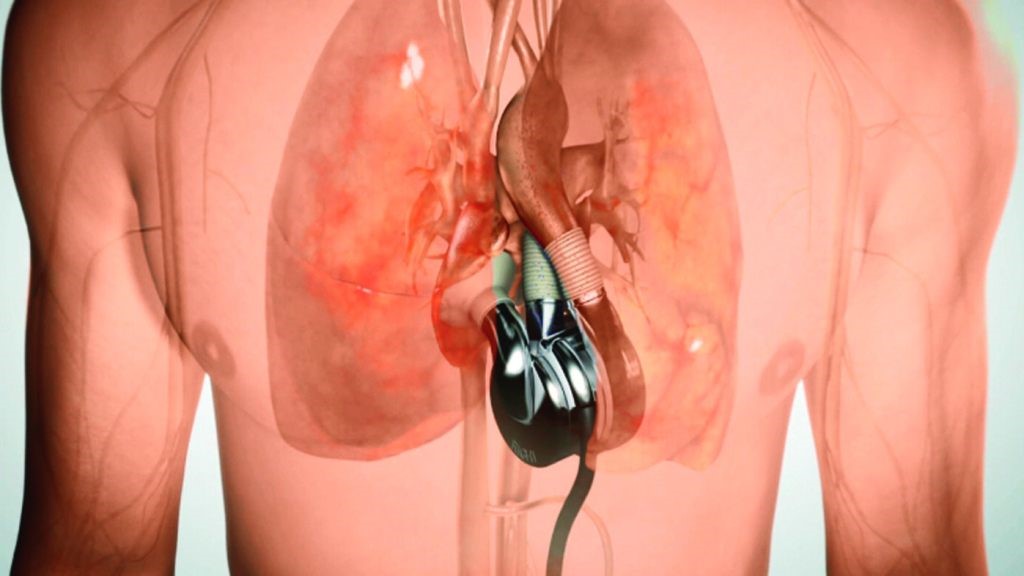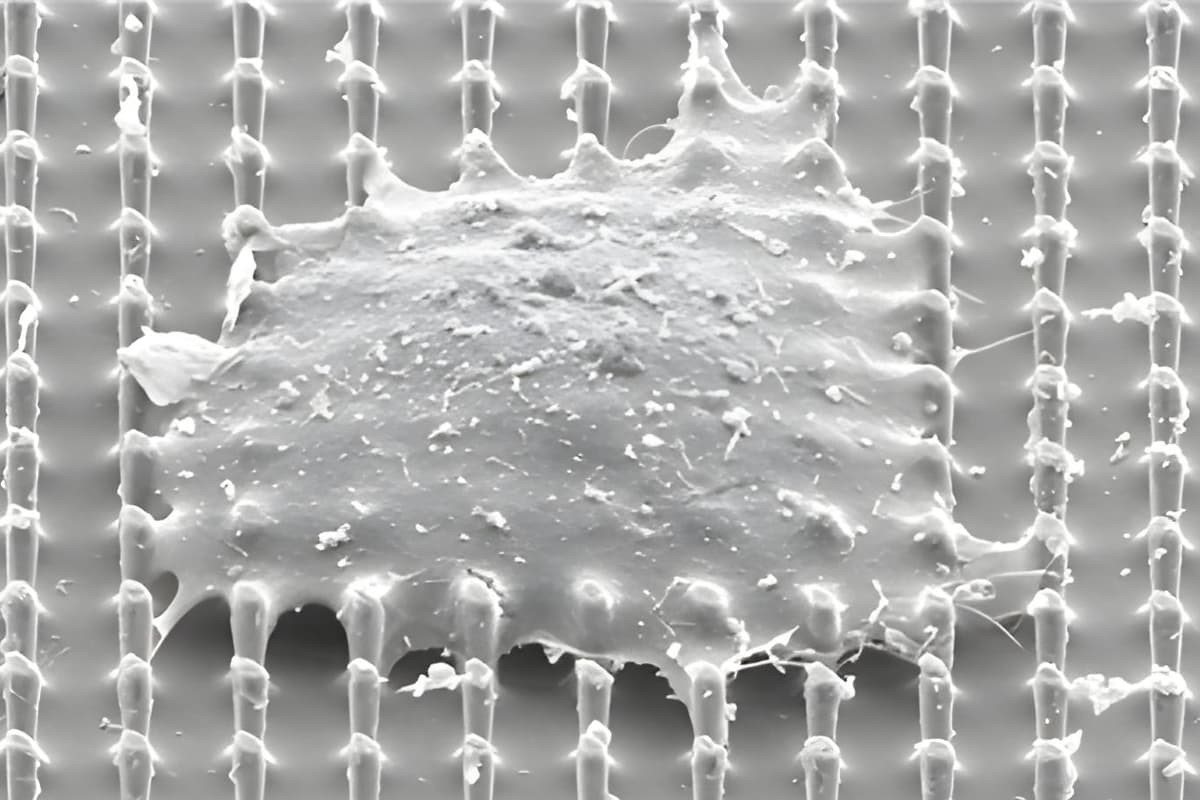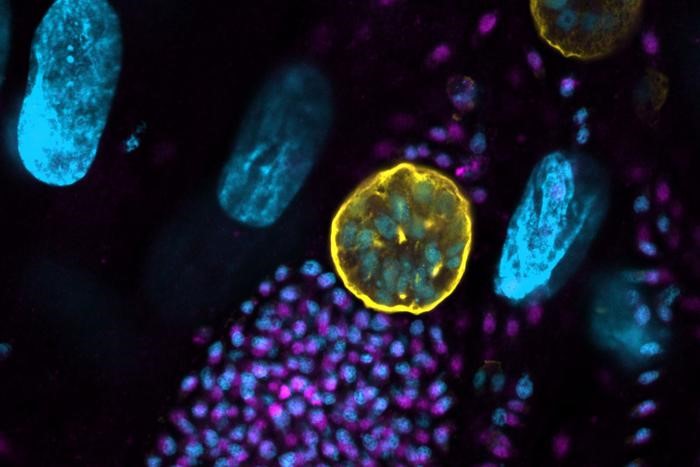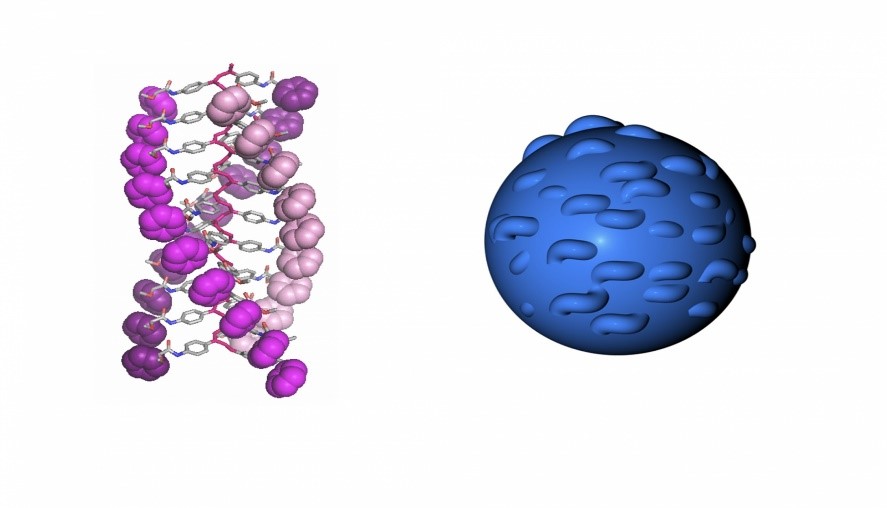Origami-Inspired Solution: Innovating Sensor Placement in 3D-Bioprinted Tissues
Researchers at Tel Aviv University used principles of origami, the Japanese art of paper folding, to tackle a significant challenge in scientific research: positioning sensors inside 3D-bioprinted tissue models. Instead of attempting to bioprint tissue over sensors, which was found impractical, they devised an origami-inspired structure. This structure folds around the fabricated tissue, allowing for the precise insertion of sensors into predefined locations.
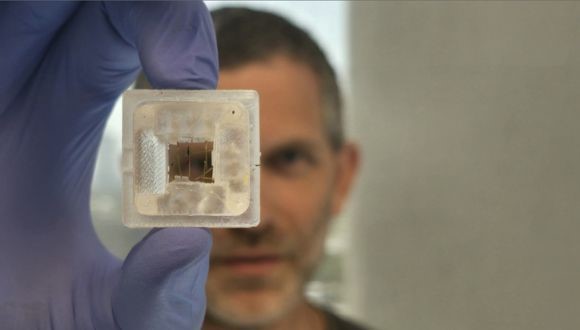
Figure 1. The 3D Origami Platform. (Credit: Tel-Aviv University)
Figure 1 shows Prof. Ben Maoz Holding the 3D Origami Platform. The study involved collaboration from various units at TAU, including the School of Neurobiology, Biochemistry and Biophysics, the Koum Center for Nanoscience and Nanotechnology, the Department of Biomedical Engineering, the Sagol Center for Regenerative Medicine, the Sagol School of Neuroscience, and the Drimmer-Fischler Family Stem Cell Core Laboratory for Regenerative Medicine. The researchers involved were Noam Rahav, Adi Soffer, Prof. Ben Maoz, Prof. Uri Ashery, Denise Marrero, Emma Glickman, Megane Beldjilali-Labro, Yakey Yaffe, Keshet Tadmor, and Yael Leichtmann-Bardoogo. Their findings were published in the prestigious scientific journal Advanced Science [3].
Prof. Maoz explained their innovative approach: " The use of 3D-bioprinters to print biological tissue models for research is already widespread. In existing technologies, the printer head moves back and forth, printing layer upon layer of the required tissue. This method, however, has a significant drawback: The tissue cannot be bioprinted over a set of sensors needed to provide information about its inner cells, because in the process of printing the printer head breaks the sensors. We propose a new approach to the complex problem: origami." [1]
The innovation leverages a unique combination of scientific and artistic principles. Using CAD (Computer Aided Design) software, the team designed a multi-sensor structure tailored for specific tissue models, drawing inspiration from origami techniques. This structure integrates multiple sensors to monitor electrical activity or cell resistance at precise locations within the tissue. The computer-designed model is then physically fabricated and folded around the bioprinted tissue, ensuring each sensor is precisely positioned inside.
The team dubbed their novel platform MSOP – Multi-Sensor Origami Platform. They demonstrated its effectiveness by successfully integrating sensors into 3D-bioprinted brain tissues, recording neuronal electrical activity. The researchers highlighted the platform's versatility, emphasizing its ability to accommodate any number and type of sensors in various positions within different types of bioprinted tissue models or lab-grown tissues like brain organoids.
Prof. Maoz further noted another advantage of their platform in experiments with bioprinted brain tissue: " For experiments with bioprinted brain tissue, we demonstrated an additional advantage of our platform: the option for adding a layer that simulates the natural blood-brain barrier (BBB) – a cell layer protecting the brain from undesirable substances carried in the blood, which unfortunately also blocks certain medications intended for brain diseases. The layer we add consists of human BBB cells, enabling us to measure their electrical resistance which indicates their permeability to various medications." [2]
Summarizing their work, the researchers concluded: " In this study, we created an 'out-of-the-box' synergy between scientific research and art. We developed a novel method inspired by origami paperfolding, enabling the insertion of sensors into precisely predefined locations within 3D-bioprinted tissue models, to detect and record cell activity and communication between cells. This new technology is an important step forward for biological research."
Source: Tel-Aviv University
References:
- https://nocamels.com/2024/07/scientists-inspired-by-origami-to-place-sensors-in-3d-printed-tissue/
- https://tps.co.il/articles/the-art-of-origami-revolutionizes-sensor-placement-in-3d-bioprinted-tissues/
- https://www.eurekalert.org/news-releases/1050564
Cite this article:
Hana M (2024), Origami-Inspired Solution: Innovating Sensor Placement in 3D-Bioprinted Tissues, AnaTechMaz, pp. 258





